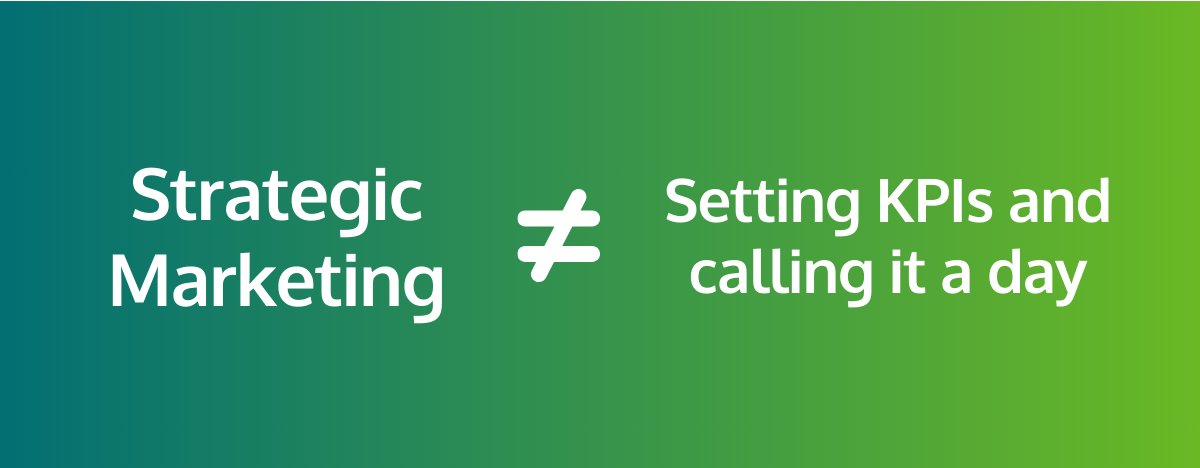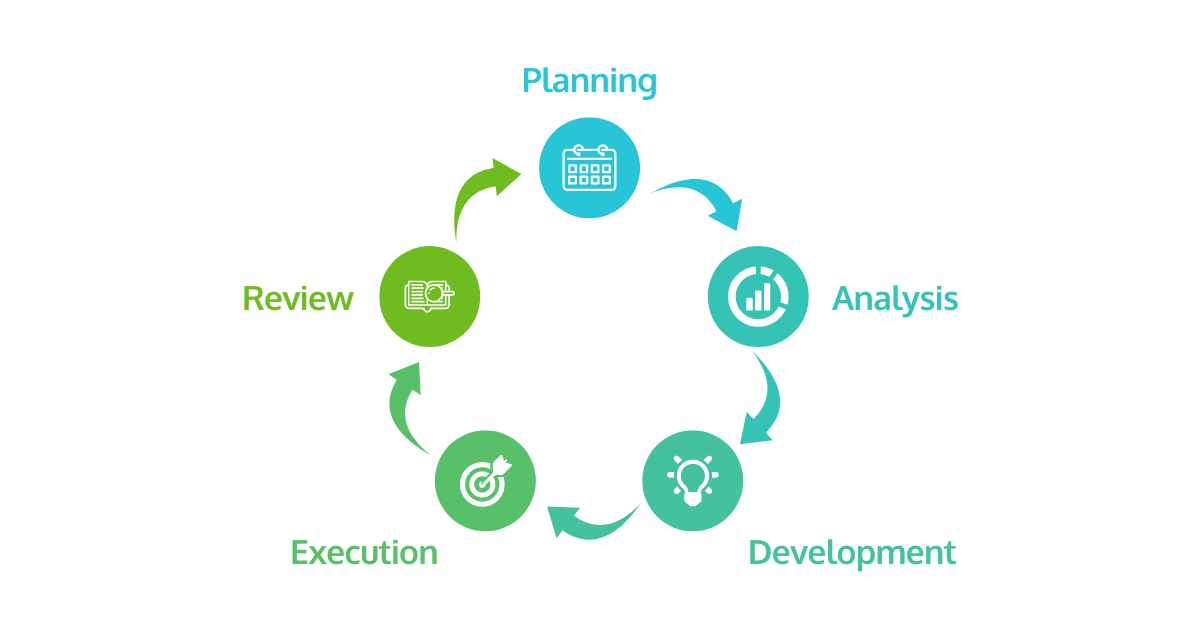Improve your Marketing Ops every week
Subscribe to our blog to get insights sent directly to your inbox.
Confront your process problems head on with a Sherpa by your side.
Explore support options that are tailored to meet you wherever you are on your climb.
Browse our pioneering Agile marketing courses
Learn from the stories of marketers already on the road to process improvement.
Featured Resource

State of Agile Marketing
Learn from 8 years of study on how marketers are increasing their agility.
Download Report
The number of pressures facing new marketing leaders is large and only getting larger. Year after year the complexity of the tools and systems we rely on increases right alongside customer expectations.
But with the blistering pace of change facing marketing departments, how are we supposed to be strategic? At what point does thinking ahead become wasteful as you start sticking to old plans instead of adapting to new realities?
Getting that balance right begins with a strategic marketing process.
It’s how you move beyond executing strategic plans as a team member and become a leader capable of developing and overseeing them. Even if you already feel familiar with the strategic marketing process, it’s important to get back to basics so you can learn to see it from a leader’s perspective.
At its most basic level, strategic marketing is simply the process of creating objectives to achieve your strategic goals. That involves research, testing, and crucially, adaptation.

Of course, it’s easy to just set some KPIs for the quarter and assume your strategic marketing process is done for the next three months. The reality is that true strategic marketing involves multiple phases to ensure proper planning, analysis, development, implementation, and reflection all occur.
In other words, strategic marketing is about more than just having a strategy. It’s about creating an effective strategic marketing process that enables you to create and execute that strategy.
With all that said, let’s look at what the strategic marketing process looks like in practice.
The first thing to point out here is that there isn’t one single way to do strategic marketing. We’re going to run through a basic structure you can use as a kind of template. But how might your strategic marketing process differ?
One of the biggest variations is going to be cadence.
Teams may run through the phases of their strategic marketing process once per quarter, twice a year, or even annually.
Another difference in how teams may approach this process comes in whether they take a top-down or more balanced approach. Teams that take a top-down approach usually base their strategic decision-making purely based on what leadership tells them to do. The problem comes when these demands meet on-the-ground realities.
For example, leadership may dictate not just what marketing should aim for, but also how they should achieve these goals. The result is marketers who don’t have the flexibility to find the best ways to achieve their strategic goals. Ideally, the strategic marketing process should take into account both the strategic goals of your organization and the on-the-ground realities of your marketers.
With those points out of the way, let’s dive into the process itself.
Regardless of how long your process lasts, you can break it up into 4 phases that repeat with each cycle.

The first and most important step is planning. This is when you figure out what objectives you want to achieve during the period your strategic planning cycle covers. Again, these goals should ultimately derive from the organization’s broader strategic goals, but still need to take the perspective of marketing into account.
Once you’ve set and aligned your strategic marketing goals, you’re ready to move on to the next step.
This is when you’ll want to do things like conduct competitor analysis, do market research, and generally get a feel for the broader context your strategic plan will operate within. The reason this step is so important is that it enables you to confirm that your goals are realistic and appropriate within your market.
You should also look closely at who your target audience is to understand how well your strategic goals fit with their needs.
For example, you might have the goal of diversifying your product offerings. The marketing and product teams have both confirmed this is realistic based on their capacity, but if market research can’t find any evidence of consumer demand, then this probably isn’t a great strategic goal.
If you do find your original strategic marketing goals need adjustments based on the analysis you do, this is the time to make those adjustments.
Now that you have a set of strategic goals you know are appropriate, realistic, and help your organization achieve its own strategic goals, it’s time to develop a plan to achieve them. Fortunately, this is the stage you should be most familiar with as it involves finding the best set of marketing tactics.
That might involve developing pricing strategies, further honing in on how you want to frame your products or services within the market, etc.
Now it’s time to actually execute that plan you’ve been developing. This stage might last anything from a few weeks to a few months, but it’s important to keep your finger on the pulse. If two weeks into a two-month period it’s clear you’re not getting the results you want, you might want to consider making some adjustments.
If that sounds scary, don’t worry, we’re not talking about throwing out all that strategic planning. It’s more about inserting some agility into your planning by making reasonable adjustments in response to new information. As long as you're doing so with some thought and not just on a whim, you can keep enough structure to make sure your team doesn’t think you’ve gone off the deep end.
This last stage gets left out of most discussions of strategic planning, to everyone’s detriment. If you finish a strategic planning cycle and jump straight into planning for the next one, you’re missing out on all the potential insights of your last cycle!
Sure you might think “I was there, I saw what happened, of course, I learned those lessons.” But taking time to more formally review the last plan through something like a retrospective meeting is going to give you far better insights.
After all, someone on your team might have noticed something that can be improved but just never found the right moment to mention it. By setting aside dedicated time to review, discuss, and derive lessons, you ensure those lessons are high quality and get shared throughout the team.
With that, you’re ready to start the cycle over again, armed with key lessons learned and ready to do even better next time.
Before you learn about the role of MarOps, why don't you take a second and get our Agile Marketing Quick Start Guide?
Okay, so all that might be clear but there are still a few elements many marketing teams miss about the strategic marketing process. First is the vital role marketing operations plays. Not to get too “Inception”, but the foundation of any strategic marketing process is the regular day-to-day marketing processes we use to get work done.
The reality of the increasing rate of change facing marketers means that without quality marketing operations, the effectiveness of those processes degrades over time. By working closely with leadership and team members, operations enhances strategic capabilities by ensuring teams have the right people, processes, and technologies they need to achieve their strategic goals.
So before you dive fully into a new strategic marketing process, consider whether your marketing operations is ready to provide the support you’ll need.
With all of that out of the way, how should you approach creating your first strategic marketing plan?
One tip is to approach the entire process with an Agile mindset and ideally embracing Agile marketing as a whole. It’s one thing to talk about being flexible in how you run through the phases of the strategic marketing process, but actually doing it can be difficult.
But if you’re running an Agile marketing team, you’ll be far better equipped for the planning phase because you should be getting regular input from leaders on key priorities. That kind of alignment makes it easier to complete this phase quickly and avoid wrangling over what the strategic priorities should be.
The analysis phase is tricky because it’s easy to get stuck thinking “let’s analyze just one more competitor, just to be safe.” The next thing you know, scope creep has reared its ugly head and your process is running behind. Fortunately, that Agile mindset is handy in getting marketers and their managers to ask themselves whether that additional bit of data is really going to provide enough value to justify the work. This helps combat scope creep and ensures analysis can get done in a reasonable amount of time.
When it comes to the development phase, Agile teams should have data on team capacity, priorities, and the results from regular retros. All of this helps ensure your planning is more targeted and realistic.
When it comes to the execution phase, it’s vital to ensure you’re collecting high-quality data, reviewing it regularly, and adapting based on those conclusions. What you want to avoid is doing something that no longer makes sense simply because you decided to months ago.
Don’t think of the 5 phases as being extremely rigid. When needed, you can mix them slightly to ensure what you’re doing still makes sense based on new information. The trick is knowing when to bend those rules and when to create a bit more structure for your team. That’s where Agile leadership experience becomes so important.
If you’re interested in building the kind of Agile foundation you’ll need to effectively lead a strategic marketing process, our Agile Marketing Leadership course has a variety of options suitable for all kinds of marketing leaders.
You can attend a live, online, instructor-led cohort to get a certification or just try a self-paced course to build those skills on your own time. Either way, you’ll learn how to manage strategic marketing processes with an Agile mindset, ensuring your team can be more effective while more efficiently delivering on your organization’s strategic priorities.
So stop feeling anxious about how you’re going to absolutely nail your strategic marketing process by signing up for Agile Marketing Leadership today!
Before moving on, don't forget to get your Agile Marketing Quick Start Guide.
Subscribe to our blog to get insights sent directly to your inbox.
Subscribe to our blog to get insights sent directly to your inbox.